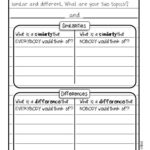A ratio is a fundamental mathematical concept used to compare two quantities. A particularly useful form expresses this comparison as A Ratio That Compares A Number To 1. This allows for easy interpretation and understanding of the relationship between the two quantities. This article will explore the definition, calculation, properties, uses, and examples of ratios, focusing on how they represent a comparison to one.
What is a Ratio? Comparing Two Quantities
A ratio is a quantitative relationship between two amounts, showing the number of times one value contains or is contained within the other. While ratios can be expressed in various ways (e.g., fractions, decimals, percentages), representing them as a comparison to 1 provides a standardized and insightful perspective. This standardized form is often represented as “x:1” where x represents the quantity being compared to one.
Calculating a Ratio: The Formula
Calculating a ratio involves dividing one quantity by another. To express a ratio that compares a number to 1, divide the first quantity (numerator) by the second quantity (denominator). The result is then often expressed as “result to one” or written as “result:1”.
For instance, if there are 20 apples and 5 oranges, the ratio of apples to oranges is 20/5 = 4. This can be expressed as “4 to 1” or “4:1”, signifying that there are four times as many apples as oranges.
Properties and Uses of Ratios in Various Fields
Ratios are widely used across diverse fields, including:
- Epidemiology: Researchers utilize ratios to compare disease occurrence between different groups, calculate risk ratios, and analyze mortality rates. For example, the death-to-case ratio compares the number of deaths to the number of cases of a disease, often expressed as a ratio to one.
- Healthcare: Ratios are employed to analyze patient data, such as the ratio of nurses to patients, providing insights into staffing needs and resource allocation.
- Finance: Financial analysts utilize ratios to assess a company’s profitability, liquidity, and solvency, often comparing key financial figures to 1.
- Demographics: Demographers use ratios to analyze population characteristics, such as the sex ratio (males to females), frequently expressed as a ratio to one.
Examples of Ratios Compared to 1 in Real-World Scenarios
Let’s examine some real-world examples illustrating a ratio that compares a number to 1:
-
Clinic to Population Ratio: A city with 1 clinic for every 10,000 residents has a clinic-to-population ratio of 1:10,000 or 0.0001:1. This helps understand healthcare access in the city.
-
Student-Teacher Ratio: A school with 20 students for every teacher has a student-teacher ratio of 20:1. This metric helps assess classroom sizes and individual attention provided to students.
-
Infant Mortality Rate: If a region experiences 5 infant deaths per 1,000 live births, the infant mortality rate is 5:1,000 or 0.005:1. This is a critical indicator of public health.
Death-to-Case Ratio: A Crucial Epidemiological Tool
A vital epidemiological ratio is the death-to-case ratio, comparing the number of deaths from a specific disease to the number of cases during a given period. Expressing this as a ratio that compares a number to 1 provides a clear indication of disease severity. For example, a death-to-case ratio of 1:100 indicates one death for every 100 cases.
Conclusion: The Power of Comparing to One
Expressing ratios as a comparison to 1 simplifies complex relationships, making them easier to understand and analyze. This standardization allows for effective comparisons across different datasets and contexts, facilitating informed decision-making in various fields. Whether assessing disease severity, evaluating financial performance, or understanding population dynamics, a ratio that compares a number to 1 provides valuable insights.
